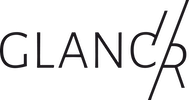The mirror is crucial for the function of the smart mirror. We have tested.
As the central component of the smart mirror, the spy mirror must meet the highest requirements. Due to your great response and the many emails we received, we present our test results to you today.
Findings in one glance
- The black level and brightness of the display are crucial for an optimal result.
- The lighting conditions in which you use the smart mirror are decisive for its performance.
- The brighter the room, the lower the transmission values are recommended.
- Chrome-coated mirrors can be sensitive.
Depending on the dimensions, the mirror thickness should be between 2 and 6 mm. - Normally, the display is smaller than the mirror, which is why, depending on the type, a gray glowing “frame” is produced in very dark rooms.
The tested mirrors
To find the best solution for the Smart Mirror, we tested various mirrors with different technology approaches. The comparison took place under constant lighting conditions. The resulting photos were also taken with constant exposure settings. Since we conducted the test on a rainy day, we illuminated the room with an additional ceiling light.
Mirrors from the glaziery
- 12 % Transmission
- 6 mm strength
- graded satisfying
China mirror from Alibaba
- 80 % Transmission
- 2 mm strength
- graded unsatisfying
SGG Mirastar®
- 3 % Transmission
- 4 mm strength
- graded sufficient
Pilkington Mirropane™ Chrome Spy
- 8 % Transmission
- 4 mm strength
- graded good
After completing the Smart Mirror prototype, we noticed that the display behind the mirror can become visible in dark and dimly lit rooms. This is due to the different transmission values of the mirrors: If the view side was significantly brighter than the inside (daylight), two of four mirrors in the test were convincing: the spy mirror from the glazier with about 12% transmission as well as the chrome mirror with 8% delivered flawless results, while the Chinese product with a transmission value of about 80% was not satisfactory. The use of the chrome mirror with 3% transmission in the bright environment was also problematic. Here, especially the representation of the white writing was too weak. The test results were different in poorly lit rooms: The model from China as well as the spy mirror from the glazier with 12% transmission performed worst, since the display including the hardware of the smart mirror was clearly visible behind the mirror here. An acceptable result was achieved by using the chrome mirror with 8% transmission. The best image in darker rooms was provided by the chrome mirror with a transmission value of 3%.
From glaziery – Transmission ca. 12 %
During the test procedure, we first equipped the Smart Mirror prototype with a peephole mirror cut to size by a conventional glazier. With a thickness of 6 mm and dimensions of 50 x 50 cm, the cost was about €80. Previous attempts with a less expensive mirror film had failed. Using silicone, the spy mirror could be attached to the device without any problems. However, caution was required during installation, as we had dispensed with a polished edge for cost reasons and there was a risk that the corners would quickly chip off.
- good results in daylight, naturally lit rooms
- sufficient results in dark rooms
- cleaning with microfiber cloths
- has a slightly darkening effect due to a light gray haze
- surface is sensitive to scratches
- cleaning with window cleaner creates streaks
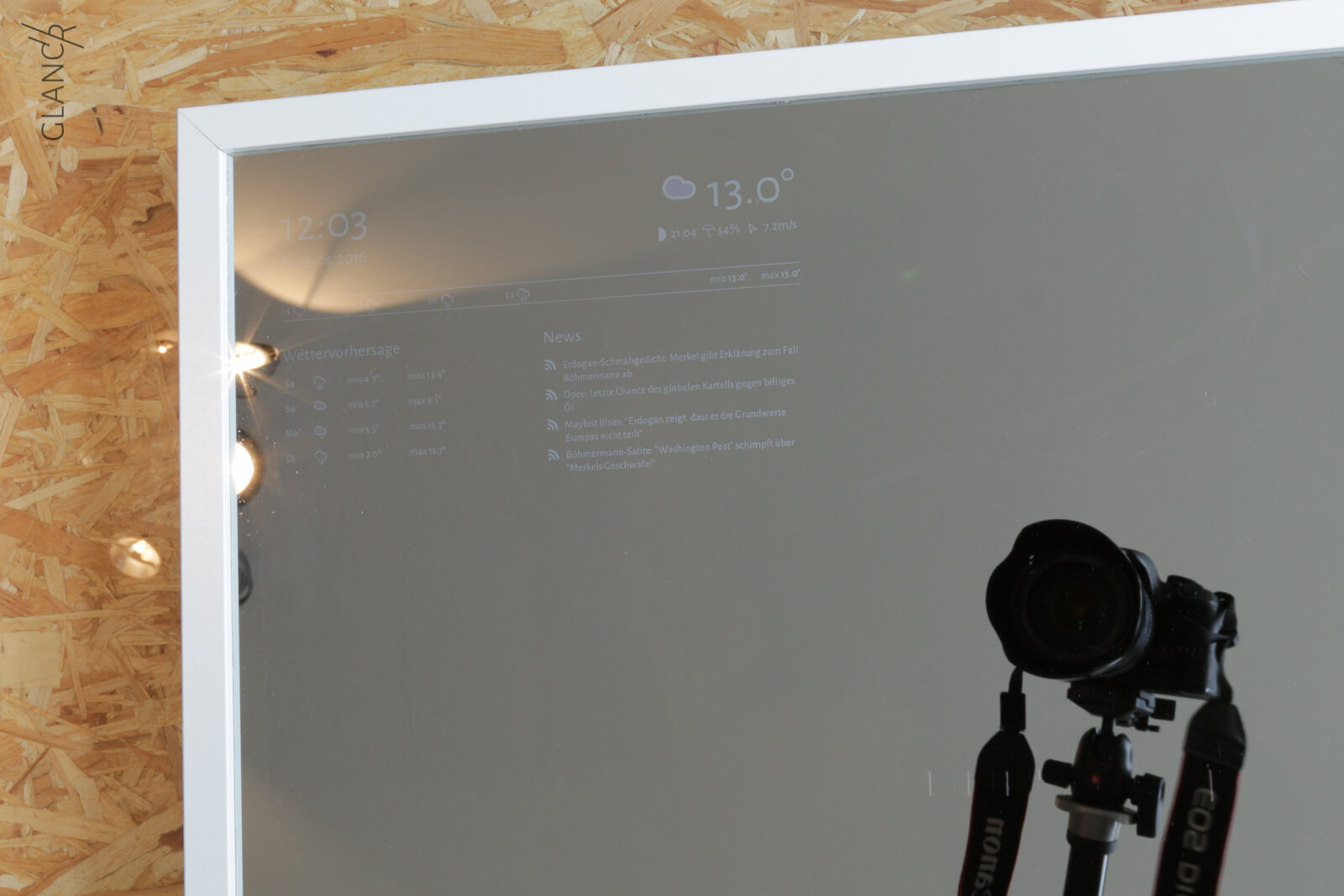
From China – Transmission ca. 80 %
We then carried out the functional test with mirrors that are produced in China. Our goal was to find a low-cost manufacturer from whom we could purchase large quantities and sell them on good terms to DIY enthusiasts. Unfortunately, communication and coordination turned out to be very time-consuming: The first delivery contained absolutely unfit, ordinary mirrors, the second was charged by customs with an additional fee of 20%. The delivery time was very long, about 30 days.
- medium gold colored veil
- strong visibility of the interior in bright rooms
- very sensitive to scratches
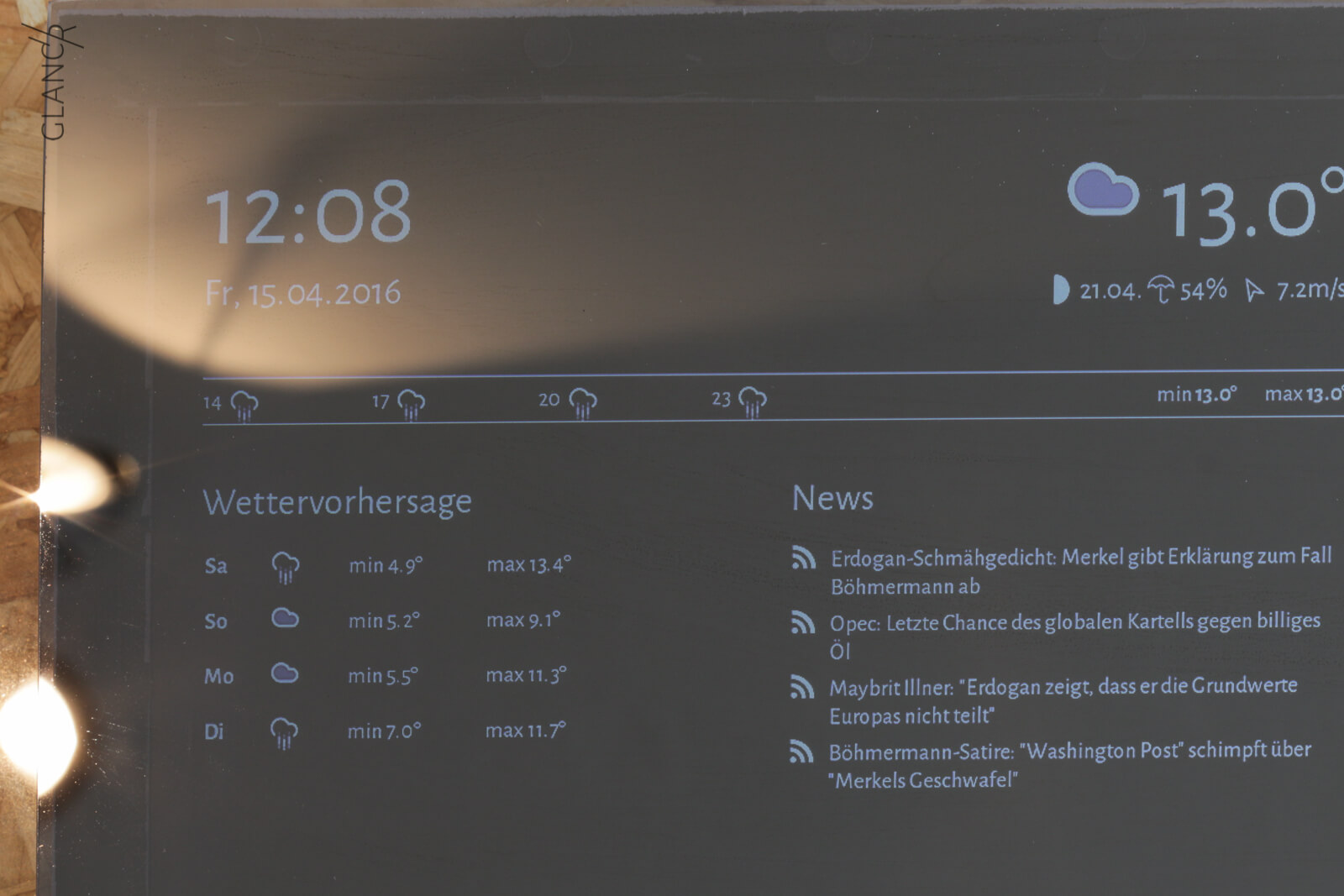
Chrome mirror – Transmission 3 %
After extensive research, we decided to extend our test to so-called chrome mirrors. This is glass that is coated with an extremely thin layer of chrome, the intensity of which makes it possible to control the transmission. A sample Mirastar chrome mirror with a thickness of 4 mm and dimensions of 50 x 50 cm was used as the test object. The cost including polished edges was about 80 €. With a transmission value of 3%, the Mirastar chrome mirror was the most opaque mirror in our test.
- no noticeable change in the image
- good result in dark rooms
- easy to clean
- much too dark in daylight rooms
- scratch sensitive
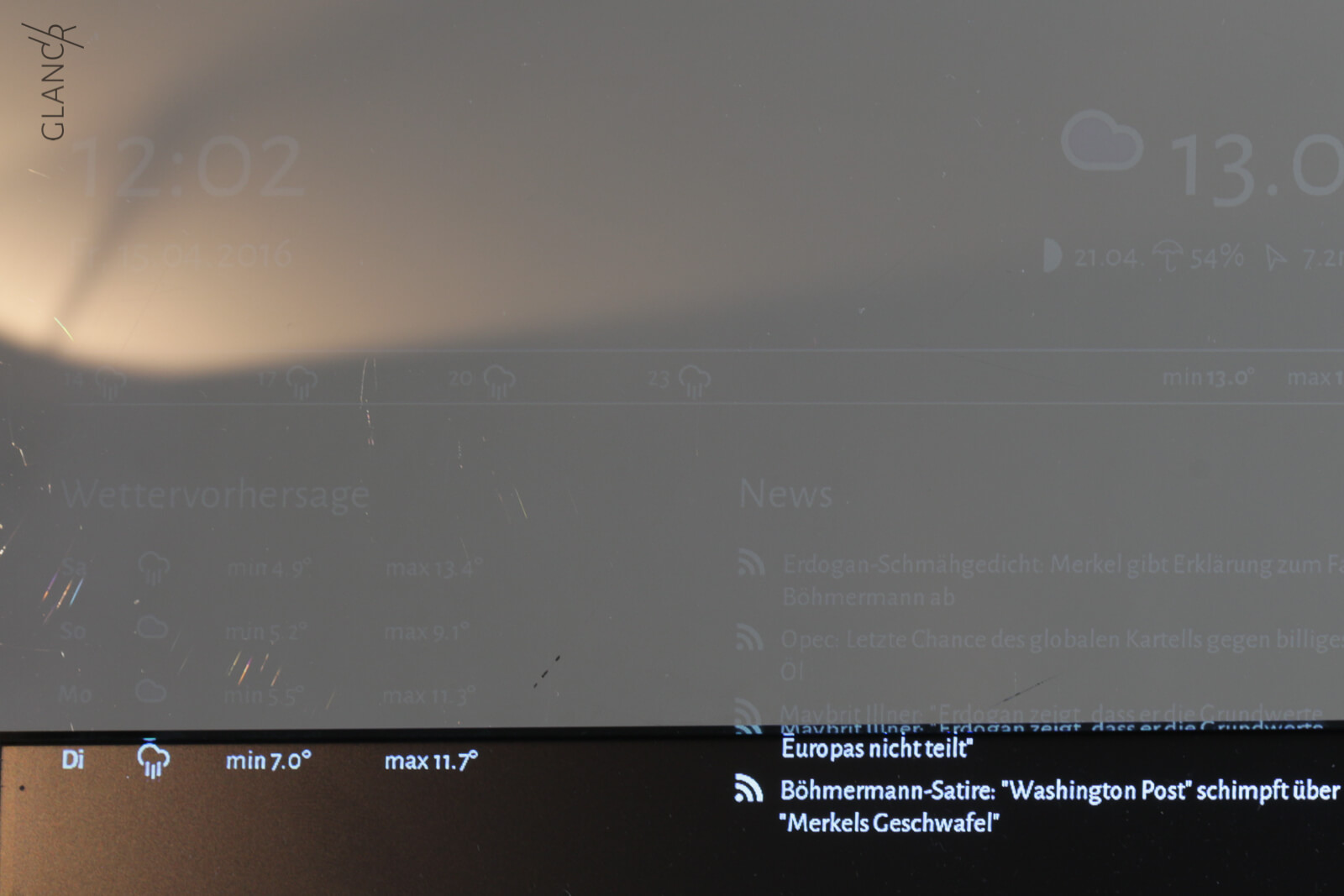
Chrome mirror- Transmission 8 %
The Miropane Chrome Spy from Pilkington concluded our test. Since we only have a sample lens so far, we cannot give any price information at this time. The Chrome Spy is also a glass coated with a very thin layer of chrome. The material thickness is freely selectable from 2 mm. The mirror convinced us in the test, as it performed well in both bright and dark rooms and thus offers a good compromise as an overall result. With 8% transmission, white writing is still easily recognizable in bright rooms despite weak luminosity. In darker rooms, the gray display behind the mirror only shimmers through slightly, but this is acceptable for viewing. The Chrome Spy also impresses in terms of material: the view side reflects like a normal mirror, while the inside looks almost black. Since we had noticed a strong scratch sensitivity in the other chrome mirror, we also performed a scratch test on this mirror with a simple pair of scissors. The result finally convinced us of the product, because there was no trace of scratches.
- no noticeable change in the mirror image
- good result in daylight rooms
- good to satisfactory result in artificially illuminated rooms
- not sensitive to scratches
- easy to clean
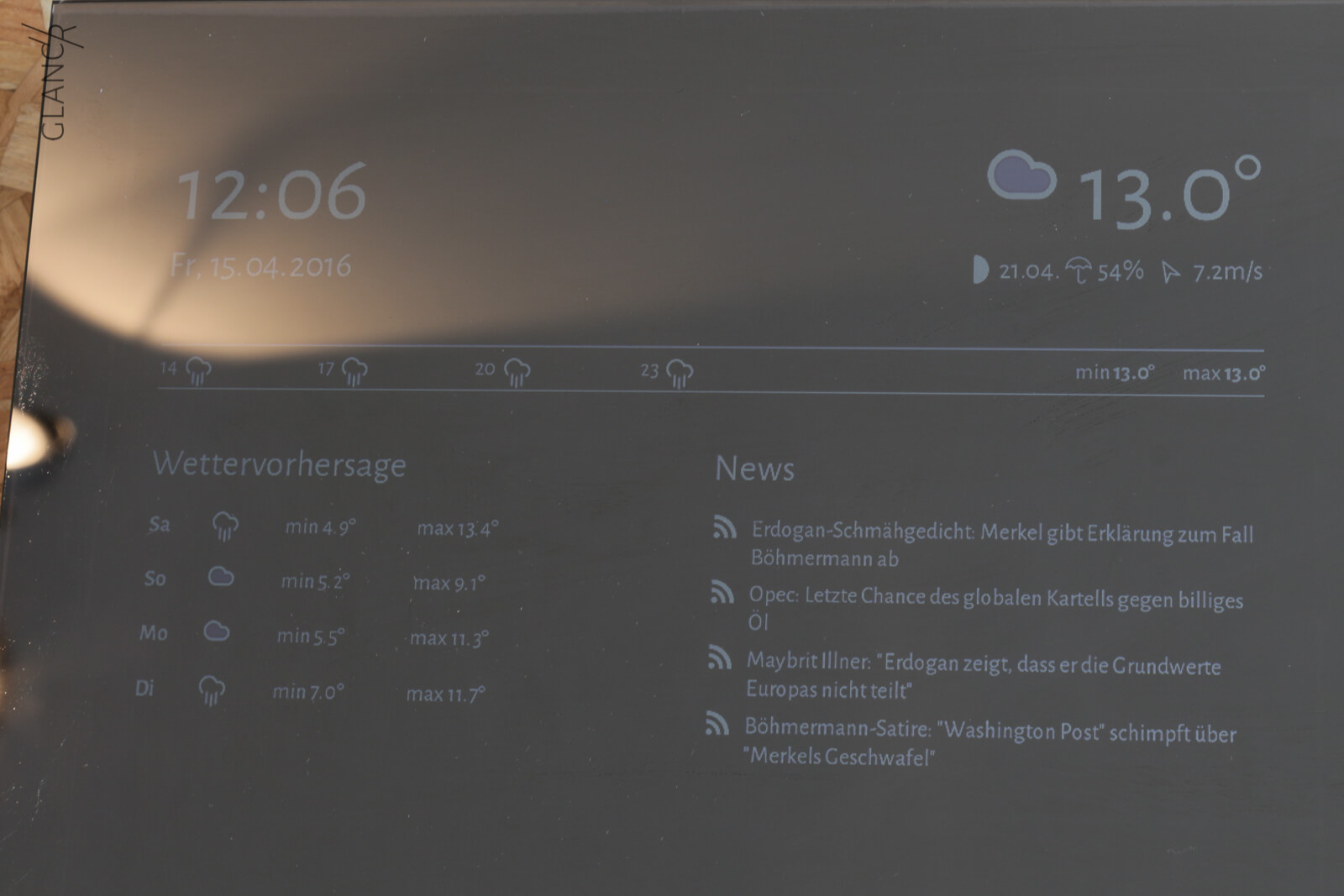
Stick on mirror films
In addition, we conducted tests with semi-transparent mirror films. The mirror films are regularly used as sun protection on windows and are available at low cost from various online stores. During installation, the mirror film is “floated” onto the glass surface using a water-rinsing solution. Excess water and any air bubbles are then moved beyond the edge of the glass with a felt squeegee.
Unfortunately, the mirror films could not convince us for two reasons.
- The mirror films are too transparent for use as a smart mirror, which means they let too much of the inner workings and hardware show through.
- The installation of the mirror films with a perfect result is almost impossible in home work. The mirror films have a protective film that is removed. Once the protective film is removed, the mirror film is electrostatically charged. This attracts the finest dust particles from the environment and they remain between the glass pane and the mirror film. These particles may be unimportant for some people. For aesthetically demanding people, however, this result might be unacceptable.
Conclusion
Depending on the lighting of the test room, the use of different mirrors is associated with advantages and disadvantages in each case. The chrome mirror with a transmission value of approx. 8% convinced us the most. It delivered good results in both bright and darker rooms. The test also showed that the transmission value of the mirror should not exceed 20%, otherwise the inner workings of the device are too visible. Since the Smart Mirror will only show white writing for the time being, a higher transmittance is not even necessary.
It remains to be seen how the display will develop. The LCDs we currently use also glow in the black areas of the display, which is why the intensity of the black color is reduced and thus appears more gray. For the product, this means that the darker the room, the more likely the overall display will shine through. We hope that OLED displays will soon be available that can also display black areas in black.
What experiences have you had? Write us your impressions in the comments!
